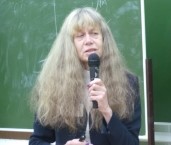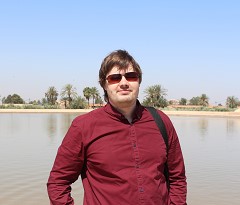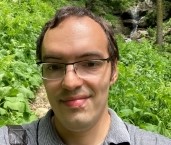L. Euler Institute School in Analysis in Sirius
October 13 – October 17, 2023
L. Euler Institute (EIMI SPbU) presents an advanced school for young researchers featuring five minicourses in modern analysis, such as wavelets, discrete and continuous duality with respect to Dirac and Schrödinger operators, singular integral operators, Padé approximations, orthogonal polynomials. The target audience includes graduate, master and senior bachelor students of any mathematical specialty.
The lecture notes and exercises are below on this page
The program is here.
ZOOM streaming is here.
Lecturers:

Maria Skopina |

Mark Malamud |

Roman Bessonov |

Dmitry Stolyarov |

Aleksandr Komlov |
Courses:
Wavelets (Maria Skopina)
The word "wavelet" appeared about thirty years ago. At that time a new topic of analysis arose due to the desire to study bases and other representation systems consisting of dilations and translations of one or several functions. An interest in these investigations was connected with an engineering aspect (that is not typical for the end of XX-th century), because such systems are in great demand in their applications to signal and image processing. Wavelet analysis was formed in the late 1980s -- early 1990s in the works of Y. Meyer, S. Mallat, P.J. Lemarier, I. Daubechies, A. Cohen, W. Lawton and others. A general method for constructing wavelet systems, based on the notion of multiresolution analysis, was developed by Y. Meyer and S. Mallat. One of the main goals was construction of compactly supported smooth wavelets. This problem was solved due to I. Daubechies. Later the wavelet theory was extended in different directions, in particular, wavelet frames, multivariate wavelets with matrix dilations, wavelet on the groups and other structures were actively studied up to now.
Lecture 1: TBA
Lecture 2: TBA
Lecture 3: TBA
Lecture 4: TBA
To the spectral theory of 1-D Schrödinger and Dirac operators with point interactions and quantum graphs (Mark Malamud)
Lecture 1: TBA
Lecture 2: TBA
Lecture 3: TBA
Entropy function in the theory of orthogonal polynomials (Roman Bessonov)
This minicourse is devoted to recent results in the theory of orthogonal polynomials on the unit circle. They were obtained via a new method based on the usage of an entropy function of the underlying orthogonality measure. The main goal of the course is to present a detailed description of this method and discuss related open problems. The basics of the theory of orthogonal polynomials will be given along the way.
Lecture 1: TBA
Lecture 2: TBA
Lecture 3: TBA
Estimates of differential operators in L^1 and related questions (Dmitriy Stolyarov)
In 1938 S.L. Sobolev proved his famous embedding theorem: the Sobolev space W_p^1 embeds continuously into the L^q space, provided 1/p - 1/q = 1/d, d being the dimension of the underlying space, and p > 1. This result was extended to the case p=1 twenty years later by E. Gagliardo and L. Nirenberg. In early 2000's J. Bourgain and H. Brezis observed that there exist similar estimates, which are relatively easy to obtain for p > 1, but are much more involved (if they are even valid) for p = 1. One of the key aspects in these matters is attributed to the vectorial nature of the differential operators in question (as, for instance, the fact that the gradient is a vector function, and not a scalar one). Nowadays, there is a certain change of perspective regarding these topics: such inequalities are believed to be interesting not only in a hermetic sense -- as a challenge to one's analytical prowess, -- but also as a way to establish deep connections to the geometric measure theory. We will describe the (by now) classical Bourgain--Brezis theory, highlight the aforementioned geometric connections, and explain how simple tricks from harmonic analysis help in this business.
Lecture 1: TBA
Lecture 2: TBA
Lecture 3: TBA
Padé approximations, their generalizations and related problems (Aleksandr Komlov)
Lecture 1: TBA
Lecture 2: TBA
Lecture 3: TBA
Lecture 4: TBA
